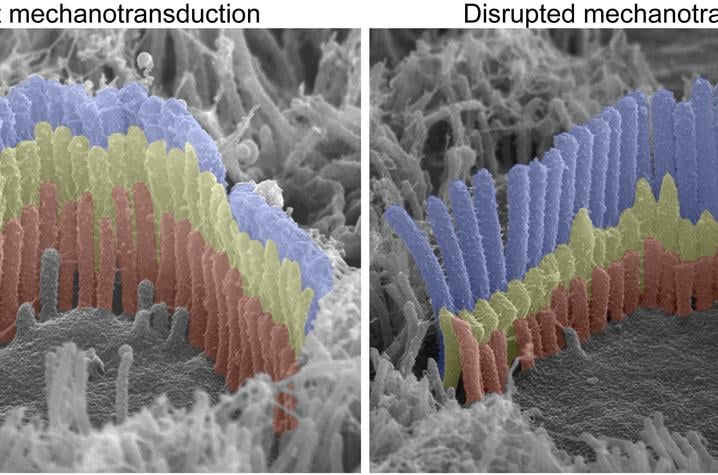LEXINGTON, KENTUCKY — University of Kentucky (UK) researchers have discovered a molecular mechanism required for stabilizing stereocilia, the sensory “hair cells” housed within the inner ear. The discovery provides new insights into the workings of stereocilia and this new understanding could enhance further exploration of new therapies to treat or prevent damage to the fragile sensory cells.
The research, “Mechanotransduction current is essential for stability of the transducing stereocilia in mammalian auditory hair cells”, will appear in an upcoming edition of the journal eLife.
Function of the Cochlear Hair Cells
Scientists believe that significant insights into the fundamental causes of hearing loss and deafness can be achieve with a thorough understanding the molecular mechanisms that underlie the maintenance of the stereocilia structure. Unlike some animals, such as birds, these fragile inner ear hair cells are unable to regenerate in the human body.
Stereocilia, tiny nanoscale structures, are grouped together in staircase-like rows that are interconnected by extracellular filaments. Hearing occurs when sound vibrations deflect stereocilia, tension the extracellular filaments and open mechanotransduction ion channels allowing calcium and other ions to enter the hair cell.

A diagram of mechanotransduction when ion channels are disrupted. Image courtesy UK.
Researchers discovered that blockage of these ion channels cause the stereocilia to retract and that the retraction was dependent on the calcium influx through these channels.
“Mechanotransducer channels at the tips of sensory stereocilia of inner ear hair cells are gated by the tension of ‘tip links’ interconnecting stereocilia. To ensure maximal sensitivity, tip links are tensioned at rest, resulting in a continuous influx of Ca2+ into the cell. Here we show that this constitutive Ca2+ influx, usually considered as potentially deleterious for hair cells, is in fact essential for stereocilia stability. In the auditory hair cells of young postnatal mice and rats, a reduction in mechanotransducer current, via pharmacological channel blockers or disruption of tip links, leads to stereocilia shape changes and shortening…”
Source: Univ Kentucky; title image courtesy MIT








Hey! When do you belive you gonno have cure for hearing loss?
Please answer to my mail.